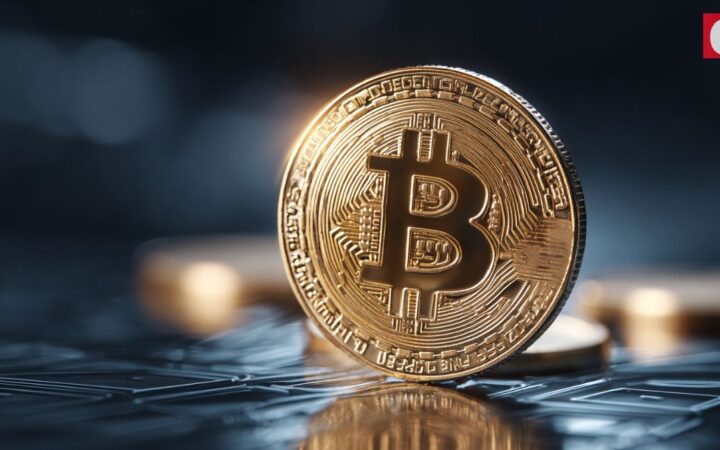
Let’s talk web3, crypto, Metaverse, NFTs, CeDeFi, meme coins, and Stocks, and focus on multi-chain as the future of blockchain technology. Let us all WIN!
Proof of Reserves is a good way for crypto exchanges to show their clients and regulatory authorities that they have enough funds to cover all their liabilities and operate transparently and honestly.

Proof of Reserves is a mechanism to ensure that a cryptocurrency exchange or other financial institution has the assets it claims to have. It helps build trust between the exchange and its customers while providing greater transparency and accountability. Proof of reserves allows outside parties to view the exchange’s blockchain addresses or other records and confirm whether the exchange holds the assets it claims to have.
This is made possible through a Proof of Reserves audit conducted by an independent auditor who reviews the exchange’s records, such as blockchain addresses for on-chain assets or third-party documentation for off-chain assets, to confirm that the exchange holds the correct amount of assets. The auditor then issues a report, proofing that the exchange has the assets it claims to hold.
Proof of Reserves audits are a growing practice among cryptocurrency exchanges and other financial institutions, as it helps to build trust with customers and increase transparency. It can take different forms depending on the type of assets held by the exchange. For example, on-chain and off-chain assets.
The on-chain and off-chain assets differ in how they are recorded, stored, and transferred. On-chain assets are recorded on a blockchain, a public, decentralized ledger. They are transparent and easily verifiable by anyone. On-chain assets can be transferred directly between individuals without the need for an intermediary, and the transactions are permanently recorded on the blockchain. Cryptocurrencies like Bitcoin and Ethereum are great examples of on-chain assets.
On the other hand, off-chain assets don’t have a trail on the blockchain. Instead, they are recorded and stored in centralized systems, such as bank accounts, databases, or physical assets. Off-chain assets are typically transferred through intermediaries such as banks or other financial institutions. These assets need to be more transparent; therefore, proving that an institution holds the assets it claims to have could be challenging. Examples of off-chain assets are cash, gold, real estate, stocks, etc.
Overall, the main difference between on-chain and off-chain assets is that on-chain assets are recorded on a public, decentralized ledger, and off-chain assets are recorded and stored in centralized systems.
PoR covers two types: on-chain and off-chain.
On-chain PoR involves publishing a public record of the assets held by the exchange or institution on a blockchain. This can be done by publishing a list of the addresses of the assets held in cold storage or creating a special transaction on the blockchain that proves the assets exist. For example, a Bitcoin exchange can create a transaction on the blockchain that sends a small amount of BTC to an address that the exchange controls, thus proving that the exchange holds that specific amount of BTC.
Off-chain PoR, on the other hand, is a method that uses a third-party auditor to verify the assets held by an exchange or institution. The auditor will typically perform a physical inspection of the assets and perform various tests to ensure that they are authentic and that the exchange or institution can access them.
The frequency of Proof of Reserves updates can vary depending on the project or organization. Some projects may update their Proof of Reserves daily, while others may update them weekly or monthly. It’s recommended to check the project’s website or whitepaper for more information on the specific frequency of their reserve updates.
Both methods have advantages and disadvantages, and the choice of which method depends on the specific requirements of the exchange or institution.
On-chain PoR increases transparency by bringing independent auditors and reduces the risk of fraud through public records. At the same time, off-chain PoR builds trust by providing documentation from a reputable third-party auditor.
However, some disadvantages of on-chain PoR include the required time to perform the audit and the costs of hiring independent auditors. The same applies to off-chain PoR, except that there is more room for lack of transparency. This is because off-chain assets are not recorded on a public, decentralized ledger, making it difficult for customers to verify the assets by relying on auditors’ reports or other documentation.
Overall, Proof of Reserves is a good way for crypto exchanges to show their clients and regulatory authorities that they have enough funds to cover all their liabilities and operate transparently and honestly.
Disclaimer: Coinspeaker is committed to providing unbiased and transparent reporting. This article aims to deliver accurate and timely information but should not be taken as financial or investment advice. Since market conditions can change rapidly, we encourage you to verify information on your own and consult with a professional before making any decisions based on this content.

Let’s talk web3, crypto, Metaverse, NFTs, CeDeFi, meme coins, and Stocks, and focus on multi-chain as the future of blockchain technology. Let us all WIN!




